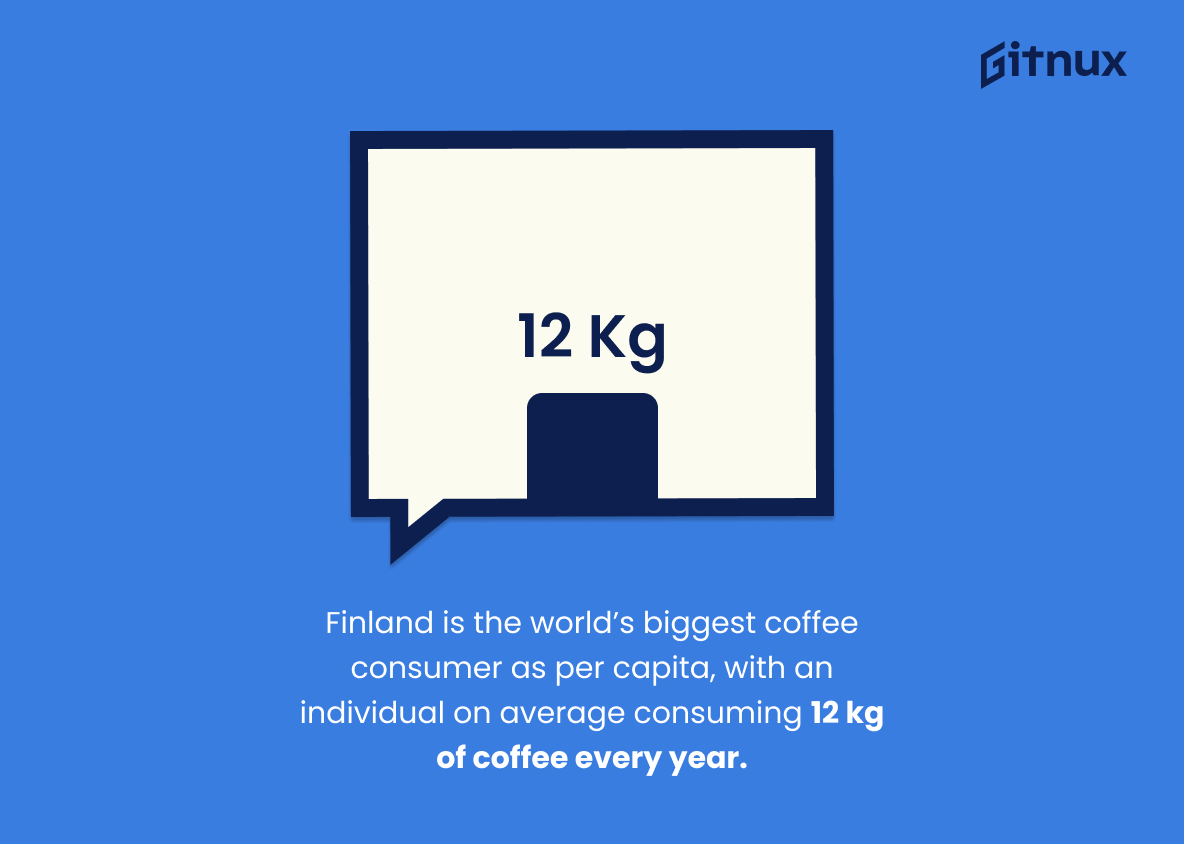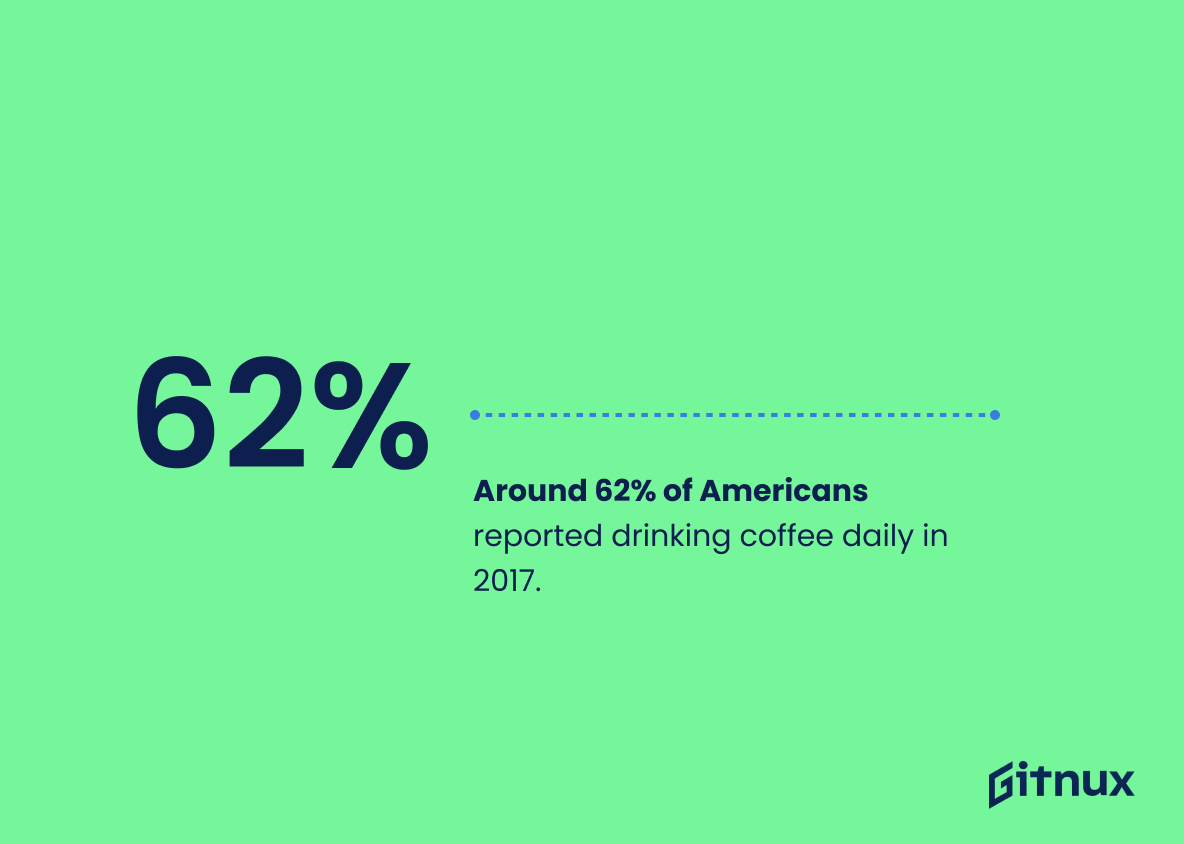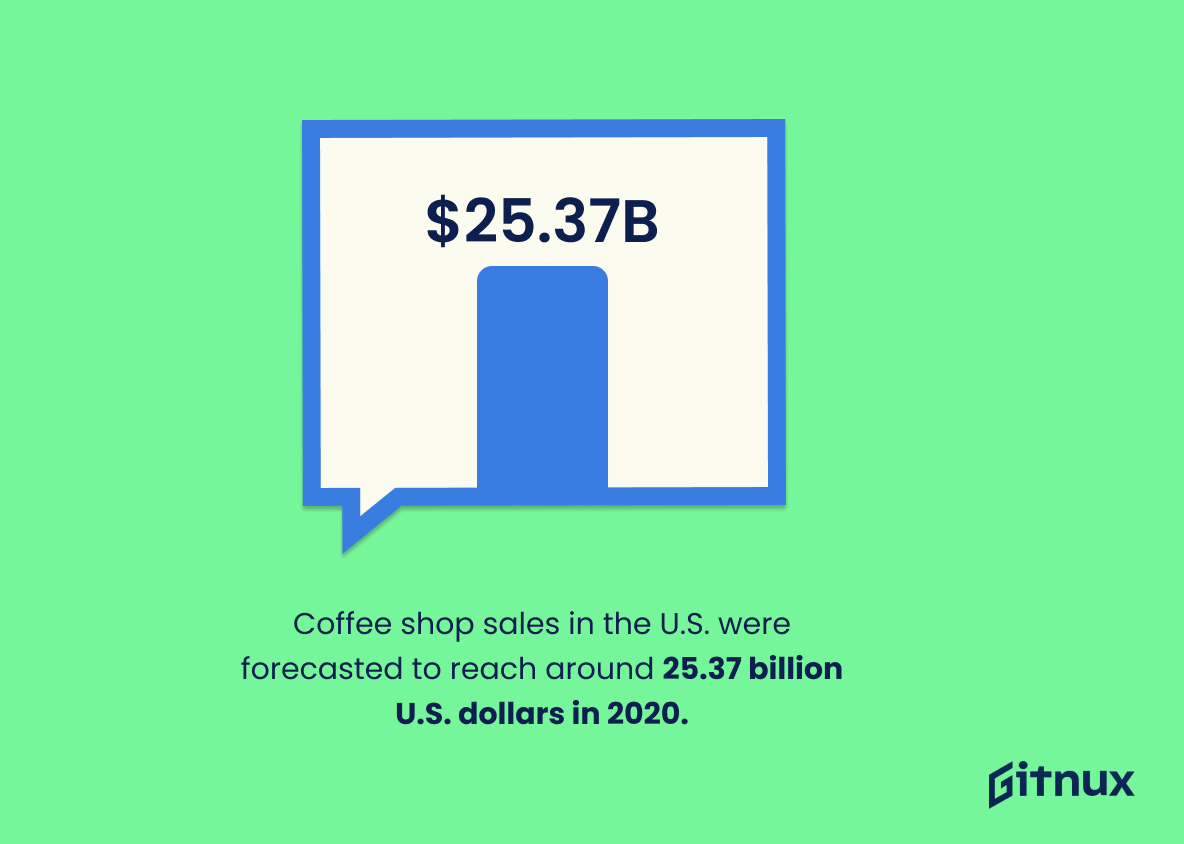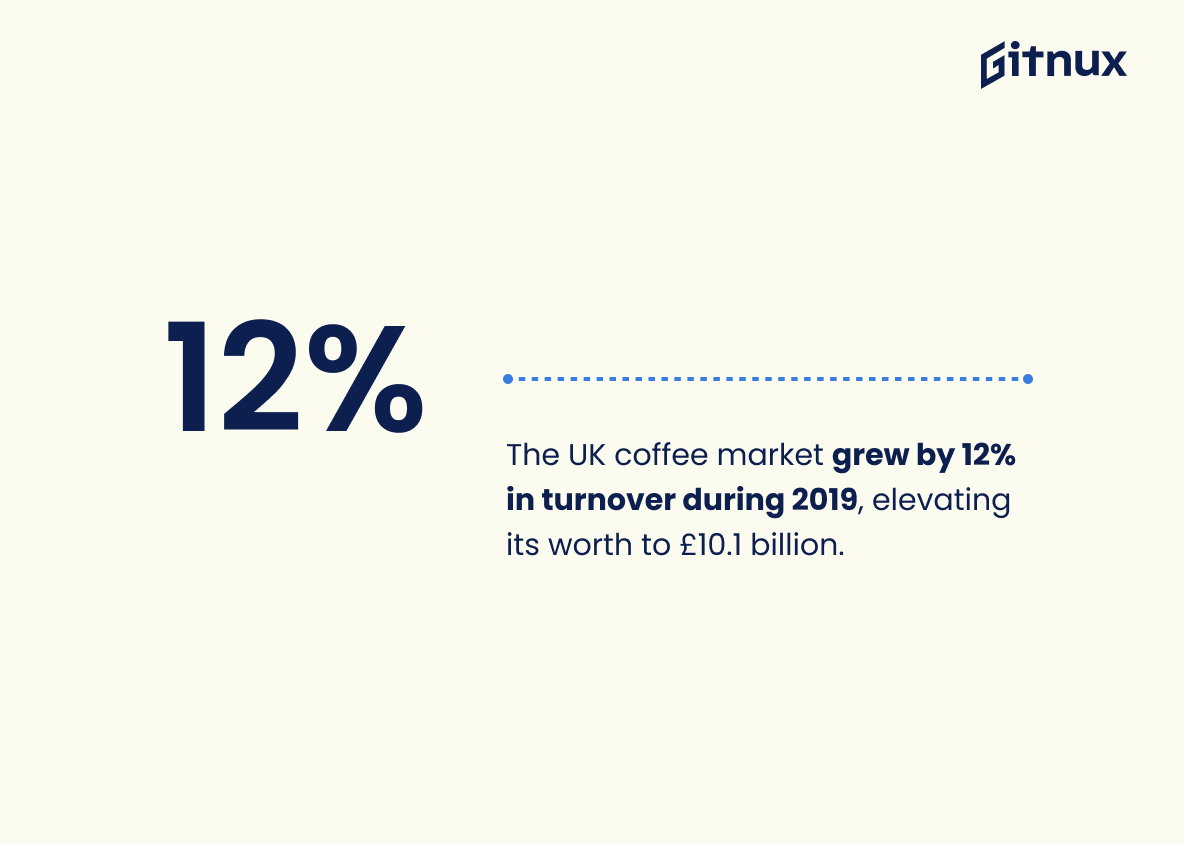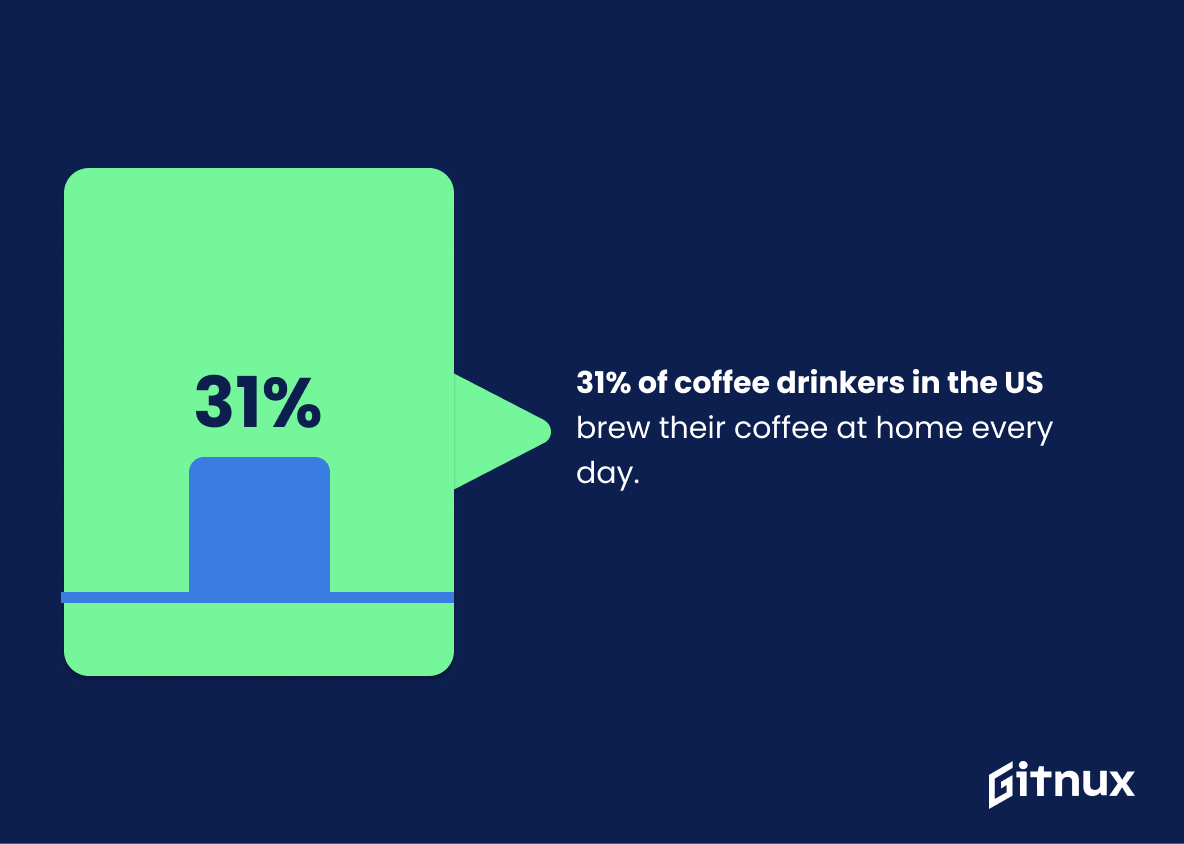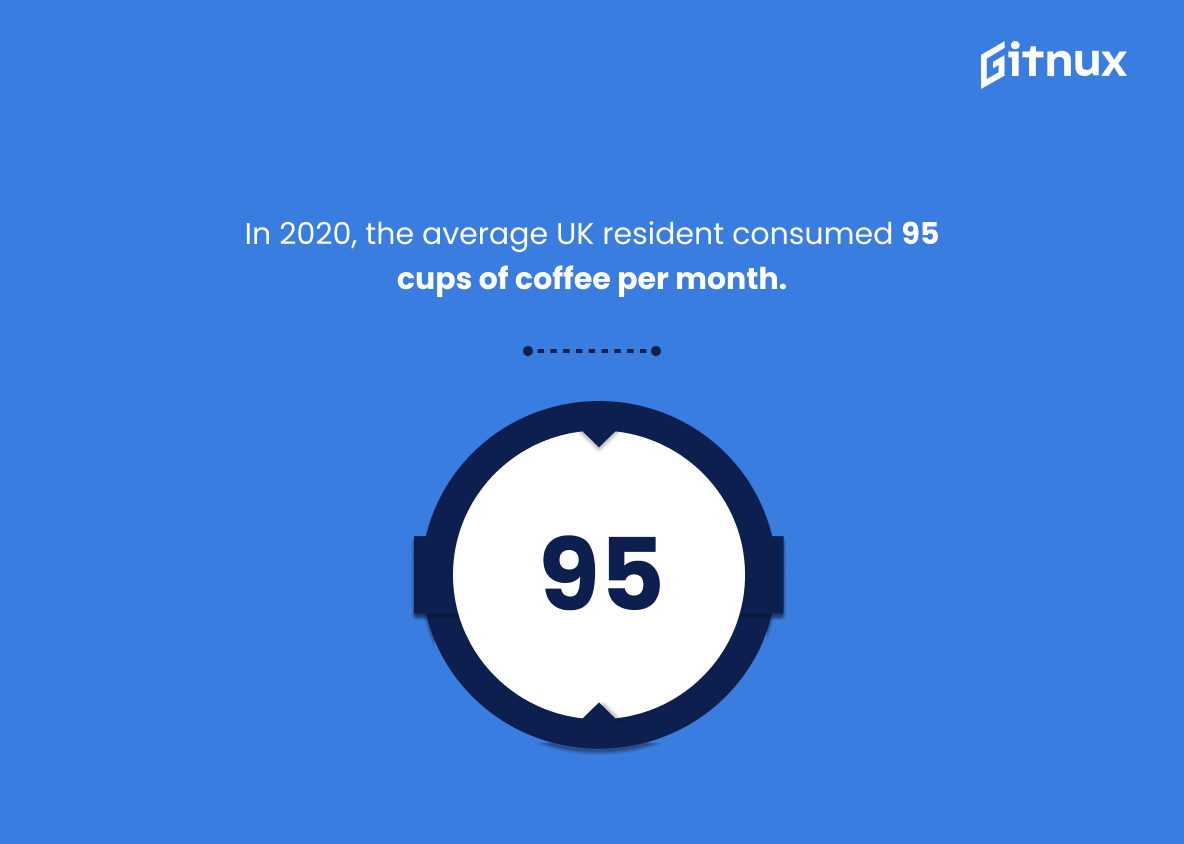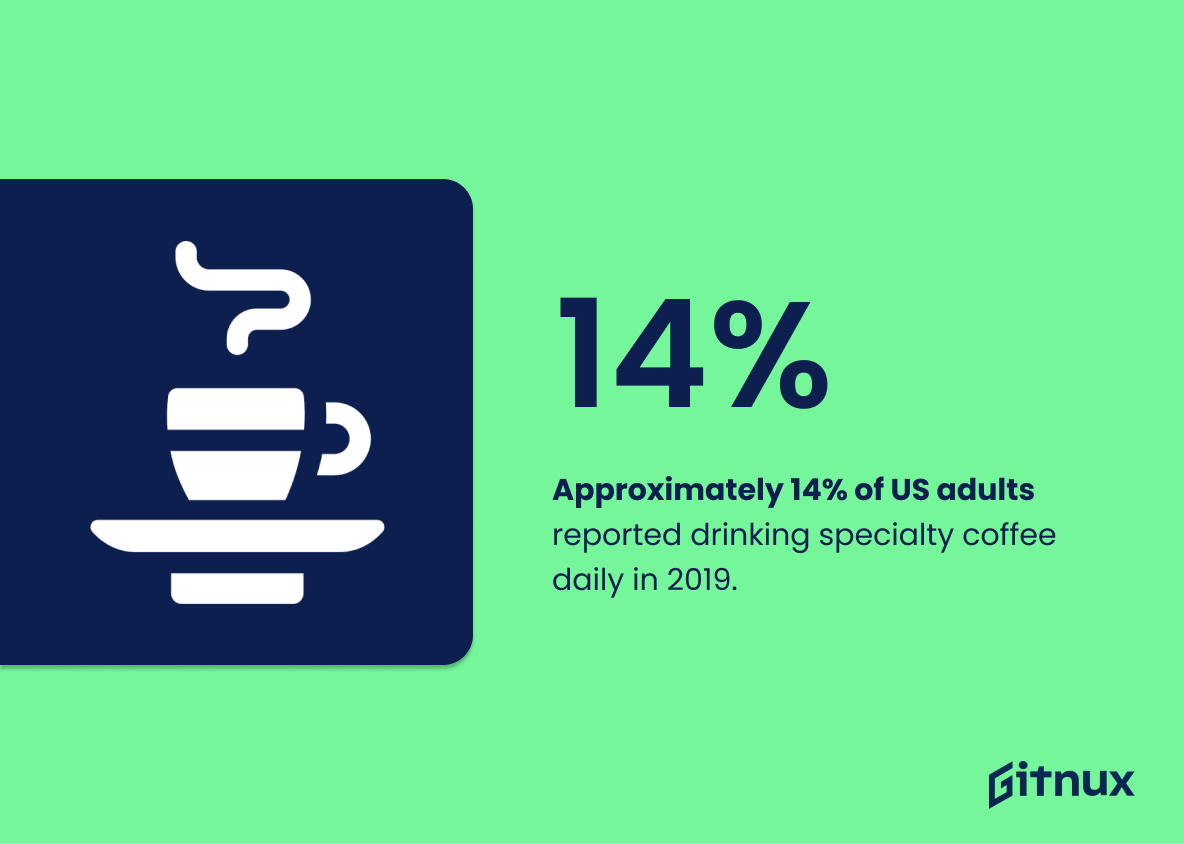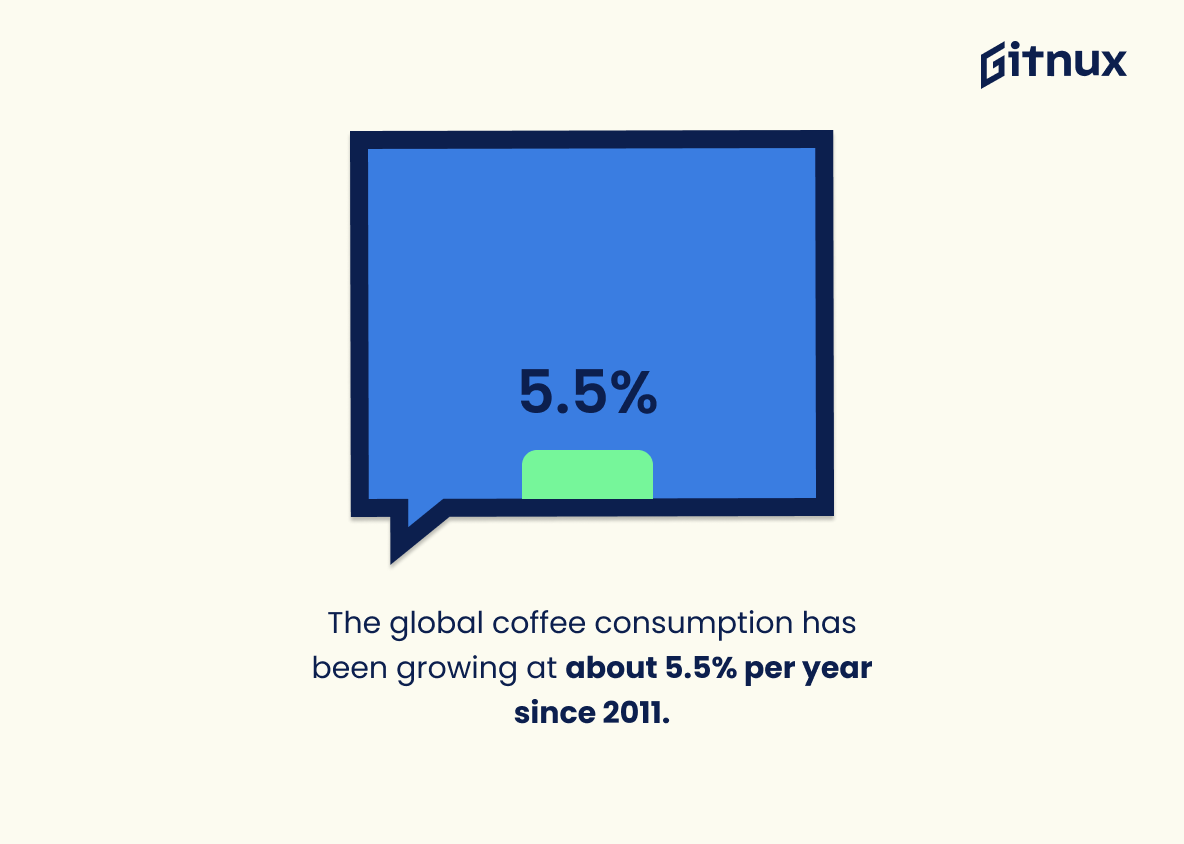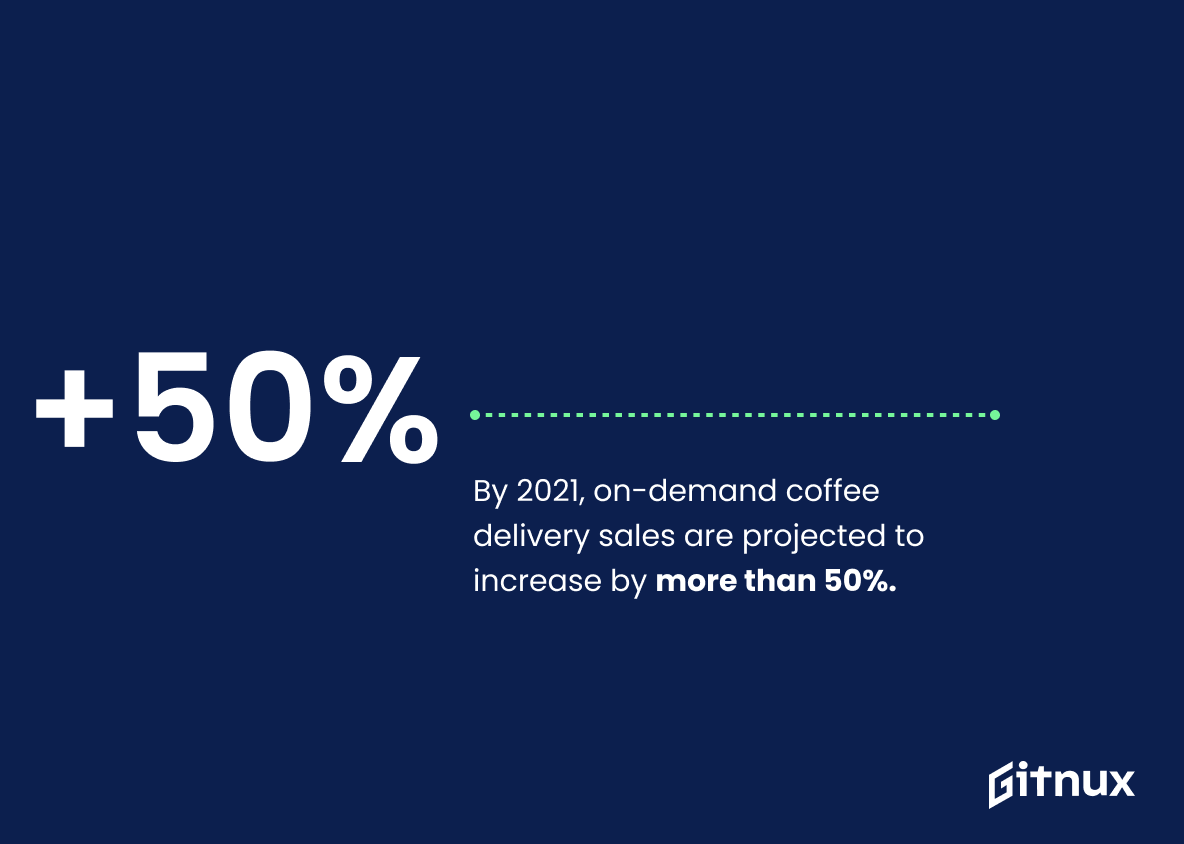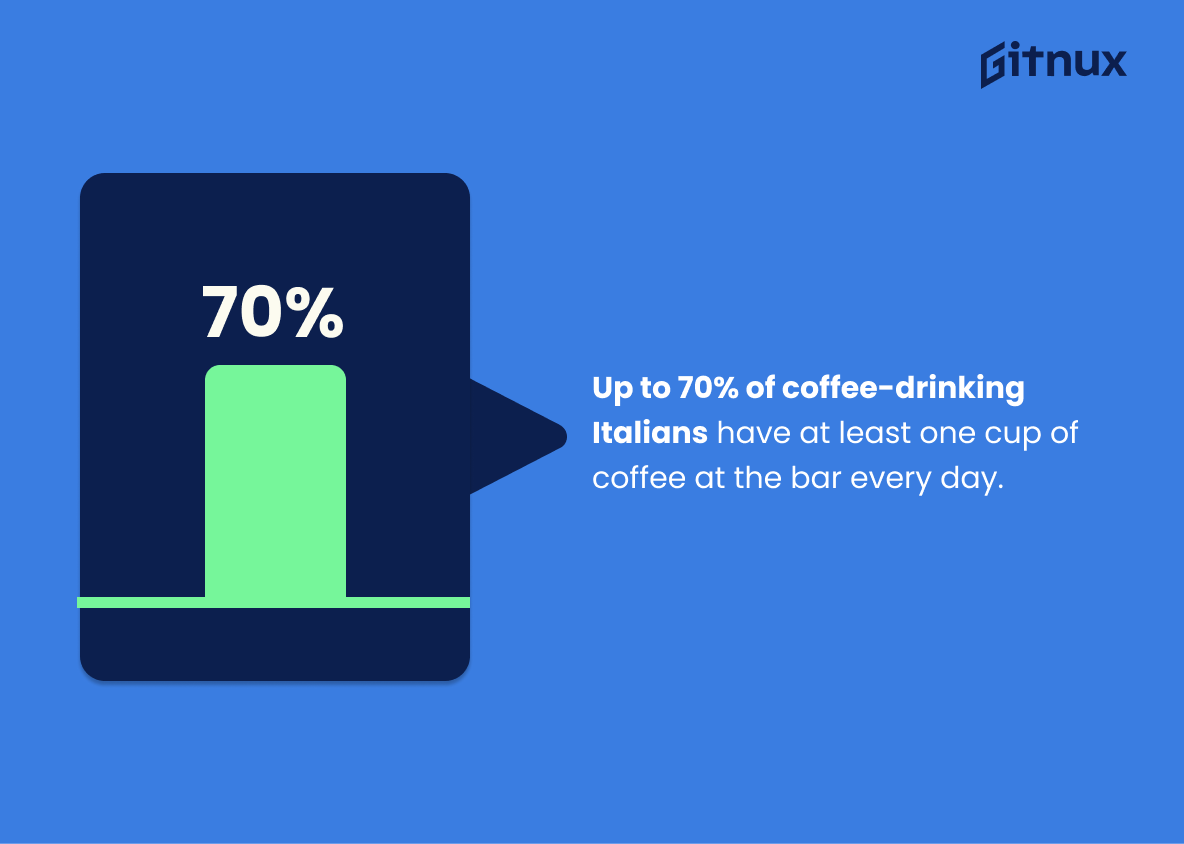Energizing mornings, fueling late-night work sessions, stimulating social gatherings, and everything in between – coffee embraces a universal appeal that transcends cultures and continents. Such mass fondness has led to remarkable numbers in coffee consumption over the years. This article dives into the fascinating world of coffee consumption statistics, providing insights into the habits of global coffee drinkers, the impact of coffee on economies, and the trends that shape the future of this beloved beverage. Whether you are a casual coffee drinker, a barista, or simply a curious statistics enthusiast, the upcoming data-centric brew is sure to pique your interest and appreciation for this delightful drink.
The Latest Coffee Consumption Statistics Unveiled
The United States imports more than $4 billion dollars’ worth of coffee each year. Source: National Coffee Association, USA.
Immersing ourselves in the world of beans and brews, a noteworthy fact illustrates the allure of coffee in the United States, a savor that rakes in a jaw-dropping amount of over $4 billion dollars in coffee imports annually. A truth proven by none other than the National Coffee Association, USA. This extraordinary statistic not only underscores the colossal love of the nation for coffee but also offers an empathetic perspective on the vigor of the economic footprint created by the United States’ caffeine affinity. This mesmeric figure contributes significant insight into the sheer scale of coffee consumption, painting a portrait of American coffee culture that refuses to be ignored, particularly in a blog post diving into coffee consumption statistics.
Finland is the world’s biggest coffee consumer as per capita, with an individual on average consuming 12 kg of coffee every year.
Spotlighting Finland as the globe’s premier coffee consumer demonstrates the tremendous magnitude of coffee’s cultural influence. The astonishing 12 kg annual per capita consumption punctuates not just Finland’s unique relationship with this global brew. It serves to nourish the discussion on the disparity among coffee consumption habits worldwide, enriching the post’s comprehensive outlook on coffee consumption statistics. It cultivates intrigue and stimulates debate around the impact of geographical, cultural, and socioeconomic factors affecting coffee trends. It also sows seeds for further exploration into the reasons behind this high consumption rate – providing a robust, flavorful depth to the tapestry of the blog post.
Around 62% of Americans reported drinking coffee daily in 2017.
In light of a blog post about Coffee Consumption Statistics, the percentage of Americans who reported daily coffee-drinking habits in 2017 is like the pulse of America’s coffee culture, taking the temperature of the caffeine reliance in the nation. The 62% conveys that a substantial majority of Americans can’t seem to start their day without a cup of java, painting the picture of a community seemingly bonded by their adoration for this potent brew. Moreover, it signals an established and continuing demand for coffee, which could be a driving factor in business strategies for coffee chains, independent cafes, and even the supermarket sector. It’s not just numbers, it’s a declaration: Coffee is an integral part of the American lifestyle.
In 2020, Brazil accounted for more than a third of all coffee production worldwide, making it the world’s largest coffee producer.
Drawing deeper insights from this statistic, we realize the sheer magnitude of Brazil’s contribution to the world’s coffee scene. As the espresso master of the globe, Brazil’s influence dramatically steers worldwide coffee trends, tastes, and pricing. Understanding this coffee colossus provides the foundation to explore coffee demand, market dynamics, trends, and the impact of consumption patterns globally. A sizzling cup of juicy detail in our coffee consumption statistics study, isn’t it?
Switzerland has the highest spend per person on coffee in the world, averaging $266.78 per person per year.
Highlighting Switzerland’s top spot in individual coffee expenditure globally, at a staggering average of $266.78 per person per year, lends an intriguing dimension to our exploration of global Coffee Consumption Statistics. This snippet of information serves as a potent espresso shot, invigorating the narrative, by offering insights into consumer spending patterns on coffee. It hints towards the societal, cultural, and economic factors in Switzerland that likely facilitate such high per-capita spending on coffee. The Swiss anecdote forms a rich brew of context, stimulating reflections on similar or contrasting consumption patterns worldwide, and the underlying factors driving these differences. It’s a stirring story hidden in a coffee cup.
Americans consume 400 million cups of coffee per day, making the United States the leading consumer of coffee in the world.
Reflecting upon the vast sea of 400 million cups of coffee consumed by Americans each day, it’s as though each American noisily sips from the cup of caffeine nirvana, catapulting the United States to the zenith of global coffee consumption. This staggering figure offers a riveting narrative about the American identity. The treasured tradition of ‘a cup of joe’ not only highlights the cultural significance of coffee in the United States but also illustrates the country’s hefty influence on the global coffee market. It illuminates the strength of the American coffee industry and depicts the insatiable thirst of its people for this fragrant brew. Delving into these statistics is akin to uncovering the unwritten coffee chronicles of America, one that is steeped in an unending desire for this revered drink. It’s clear that coffee’s reign in the United States is unchallenged, a fact that is of fundamental importance to anyone interested in exploring coffee consumption patterns globally.
Coffee shop sales in the U.S. were forecasted to reach around 25.37 billion U.S. dollars in 2020.
Imagine being presented with a mind-boggling puzzle, one that’s about understanding the escalating love affair Americans are having with coffee. How can we measure this? In comes our most crucial piece – the forecast that coffee shop sales in the U.S. were projected to hit a dizzying high of around 25.37 billion U.S. dollars in 2020. Cue drumroll – as this number is not just a statistic but a testament to Uncle Sam’s burgeoning coffee culture. This prediction in sales offers an excellent indicator of how the love for coffee is transforming into a bonafide, espresso-sized financial powerhouse. It’s the caffeine-laced pulse-check required in any blog post about Coffee Consumption Statistics, underscoring the trend as it translates consumer passion into a potent purchasing power.
The UK coffee market grew by 12% in turnover during 2019, elevating its worth to £10.1 billion.
In the throbbing veins of the coffee world, this 12% growth represents more than just a tick upward on the sales graph. Imagine, for a moment, the gravitas of the UK coffee market pulsating from a robust £9 billion to a staggering £10.1 billion within just 365 days of 2019. That’s the equivalent of around 1 million decently-priced cars, or perhaps 50 million dinners at a high-end restaurant. This punchy growth paints an intriguing picture of the UK’s evolving caffeine addiction characterised by a deeper, richer, more intense love for coffee.
In your journey through this blog post on Coffee Consumption Statistics, this is your key to understanding the tidal wave of UK’s thriving coffee culture, illustrating not just our national behaviour, but economic significance.
The aroma of this statistic suggests a dynamic twist in the coffee saga, with implications ranging from booming coffee businesses, creating more jobs, to potentially influencing trends in other sectors such as real estate (yes, more coffee shops.). It’s not just about the froth on your cappuccino, this tells you how the coffee industry is becoming a powerful player in the UK’s economy. Hang on to your cups for a riveting brew of insights that could reshape your grasp on UK’s coffee industry.
31% of coffee drinkers in the US brew their coffee at home every day.
A sip of this statistical brew reveals an intriguing taste – 31% of U.S coffee connoisseurs take matters into their own hands daily, choosing the comforting sanctuary of their homes for their caffeine concoctions. As a key snippet in a blog post about Coffee Consumption Statistics, this data lights up the devotion of the American coffee lovers to their brew, displaying the strength of a home-brewing culture. It hints at interesting patterns for manufacturers, retailers, and marketers alike. For those fascinated by coffee trends, it stirs something deeper, perhaps a closer look at the personal attachment to the time-honored ritual of coffee preparation and the pleasures of savoring one’s own home-brewed cup each morning.
In 2020, the average UK resident consumed 95 cups of coffee per month.
Delving into the intriguing world of coffee numbers, one might stumble upon a fascinating fact – in 2020, the average UK resident found comfort in approximately 95 cups of coffee per month. This nugget of information serves as a rich espresso shot in our understanding of the coffee culture in the UK. It not only reflects the nation’s insatiable love for the caffeinated brew but also hints at the significant role coffee plays in their day-to-day lives. This numerical insight can be a springboard for discussions on lifestyle preferences or foretell trends for coffee industry enthusiasts, while displaying a unique facet of consumer behavior in the UK. Therefore, it’s akin to a freshly brewed masterpiece, empowering our blog post on Coffee Consumption Statistics with depth and aroma.
Approximately 14% of US adults reported drinking specialty coffee daily in 2019.
Diving headfirst into the brewing grounds of coffee consumption in the US, the splash of information can be quite invigorating. Picture this – in the bustling sea of socializing and caffeinating adults in 2019, a significant wave of approximately 14% reported savoring specialty coffee daily. This striking data lets us glimpse just how deeply the steamy aroma of espresso, the artisanal lure of latte art, and the luscious texture of cappuccino have seeped into the daily fabric of American life.
By distinguishing this 14% figure, this blog post isn’t merely pouring out numbers, but highlighting an intriguing trend. It indicates a refined palate among American coffee lovers, who seem to be drifting away from standard cups of joe and docking their coffee vessels at the port of specialty blends. Such daily devotion to specialty coffee, acting as a shot of caffeine to the coffee industry, opens new grounds of conversation regarding consumer preference, market potential and evolving cultural coffee habits.
Therefore, this statistic isn’t just a drop in the coffee ocean – it’s a rather potent concoction, adding an intense flavor to our understanding of American coffee culture, stirring the grounds for diverse conversation and simmering with implications for coffee enthusiasts and marketers alike.
The global coffee consumption has been growing at about 5.5% per year since 2011.
Peeling back the layers of the noteworthy, caffeinated fact that global coffee consumption has bolstered by approximately 5.5% per annum since 2011, it is interesting to explore its implications. After all, coffee isn’t just an early morning ritual or a pick-me-up in the middle of a grueling day; it is a thriving global industry.
Drawing profound insights from this uplift in coffee consumption makes this statistic a critical pulse check for the coffee industry, consumers, and environmentalists worldwide. This ascending trend line mirrors the evolving coffee culture crossing over various societies and economies, manifesting the intricate relationship between consumer behavior, market dynamics, and environmental impact.
From a business perspective, this provides an essential compass for businesses and investors directing them towards a promising future, fostering innovations in terms of varieties, brewing methods, serving styles, and marketing techniques to cater to the growing consumer demands.
Moreover, this rise hints at the increased awareness and acceptance of coffee over the years, highlighting a transformation in consumer taste and lifestyle preferences. This statistical phenomenon underscores the surging popularity of coffee, placing it potentially higher on the ladder of widely consumed beverages globally, affecting anything from trade to dietary trends.
From an environmental standpoint, this burgeoning rate signifies an increasing draw on resources prompting the need for sustainable coffee farming practices to meet the escalating demand without compromising our planet’s wellbeing.
In the landscape of a Coffee Consumption Statistics blog, this statistic, therefore, holds a magnifying glass on the rapidly brewing global coffee narrative, stirring fertile discussions and reflections.
By 2021, on-demand coffee delivery sales are projected to increase by more than 50%.
An invigorating insight such as this foreshadows the transformative wave sweeping across the coffee industry, especially the on-demand delivery services. As we bask in the future projected 50% rise in coffee delivery sales by 2021, we realize that our morning cups of joe are not only becoming a necessity but also a thriving industry evolving with our fast-paced, convenience-driven culture. In the context of a blog post on Coffee Consumption Statistics, this statistic serves as a pulse-check, signaling the shift in consumers’ habits and preferences, and illuminating the path for entrepreneurs and business ventures exploring this caffeine-infused landscape.
Up to 70% of coffee-drinking Italians have at least one cup of coffee at the bar every day.
In the realm of global coffee culture, Italy stands apart. Imagine, seven out of ten coffee-drinking Italians fueling their daily hustle with at least one aromatic cup of coffee at a local bar. This behavioral tribute to the coffee bean serves as solid testament to the deep roots coffee drinking holds in the daily life and social fabric of Italy. Furthermore, the importance of these numbers rises when put into the context of a blog post on Coffee Consumption Statistics. They showcase a riveting tale of tradition, taste, and the unyielding popularity of this beloved beverage among Italians, offering bloggers an excellent hook to engage their audience’s interest and deepen their understanding of worldwide coffee consumption habits.
Global coffee consumption in 2020/21 is projected to be 166.3 million bags.
Painting a vivid picture of the world’s appetite for this ubiquitous beverage, the projection of coffee consumption for 2020/21 standing at an astounding 166.3 million bags, is worth taking note of in our exploration of coffee consumption statistics. Serving as a caffeinated testament to the enduring appeal of this brew, this figure encapsulates the global coffee culture, driving understanding of market trends, influencing production strategies, and hinting at the economic impacts and future trajectories. The sheer scale suggested by this statistic highlights our caffeine-powered habits, sculpting a caffeine-laced narrative of our world today. Moreover, it gives us a bean-filled lens through which we examine the scope and scale of coffee consumption that helps readers measure the magnitude of the world’s undeniable affection for coffee.
Nearly 83% of adults in the U.S. drink coffee.
As aficionados of afternoon lattés and early morning caffeine boosts, it may be unsurprising, yet it’s still intriguing to discover that nearly 83% of American adults savor their cups of coffee with keen regularity. This captivating figure serves as a testament to how deeply intertwined coffee consumption is with the day-to-day life of the average American — It is not just a ritual, but a lifestyle. Additionally, this figure uncloaks a wealth of opportunities for the coffee industry, from marketers to product developers, to cultivate strategies honed to the significant number of coffee enthusiasts walking among us, further contributing to the narrative of the nation’s java love story.
65% of adults in the U.S. take their coffee with sugar and/or cream.
This stimulating figure suggesting that 65% of U.S. adults liven up their coffee with sugar and/or cream is highly significant in a coffee consumption analysis. It pours light on the consumer preferences, shaping how the coffee industry brews its marketing strategies. With a discernible tilt towards flavored coffee among the adult population, it is clear that simplicity doesn’t necessarily rule the roost when it comes to savoring a cup of coffee. This data point also enriches any discourse on coffee consumption habits, prompting companies to perk up their product lines with a variety of sweetened and creamed options to keep up with this widespread predilection.
Canadian adults consume 152 litres of coffee per capita annually, more than water.
Highlighting the phenomenal coffee consumption rates in Canada, where the yearly intake reaches 152 litres of coffee per capita, interestingly surpasses even our need for water. This interesting fact serves as a testament to the nation’s insatiable love for coffee. In the realm of Coffee Consumption Statistics, this tidbit plays a crucial role. It paints a striking picture of not just an isolated love for coffee, but an entire culture centred around it. This aspect of Canada’s coffee culture suggests intriguing research areas like the influence of coffee on Canadians’ lifestyle, health implications, coffee industry’s contribution to the economy and the potential market for new coffee products. The power of such a statistic punches through the page, making the readers sit up straight and pour another cup of deep, dark, delicious Canadian truth.
Conclusion
In sum, coffee consumption statistics clearly indicate the growing global love affair with this rejuvenating beverage. As we’ve explored, coffee isn’t just a morning pick-me-up, but an integral part of our day-to-day life, stimulating economic growth, fostering social interactions, and even influencing our health and wellbeing. These figures demonstrate the diverse landscapes of coffee consumption, from the growing trend in specialty coffee culture to the impact of different demographics and countries. As we move forward, it’ll be interesting to see how these trends evolve, shaping and being shaped by the dynamics of our contemporary society, economy, and lifestyle. But one thing’s guaranteed – our craving for coffee, whether for its warmth, taste, or the simple comfort it brings, isn’t showing any signs of slowing down.
References
0. – https://www.www.macsween.co.uk
1. – https://www.www.investopedia.com
2. – https://www.www.businessinsider.com
3. – https://www.observer.com
4. – https://www.www.ncausa.org
5. – https://www.nationalcoffee.blog
6. – https://www.www.e-importz.com
7. – https://www.www.italymagazine.com
8. – https://www.www.ico.org
9. – https://www.www.huffpost.com
10. – https://www.www.statista.com
11. – https://www.www.marketwatch.com
12. – https://www.www.ctvnews.ca
13. – https://www.www.worldcoffeeportal.com
14. – https://www.finland.fi

